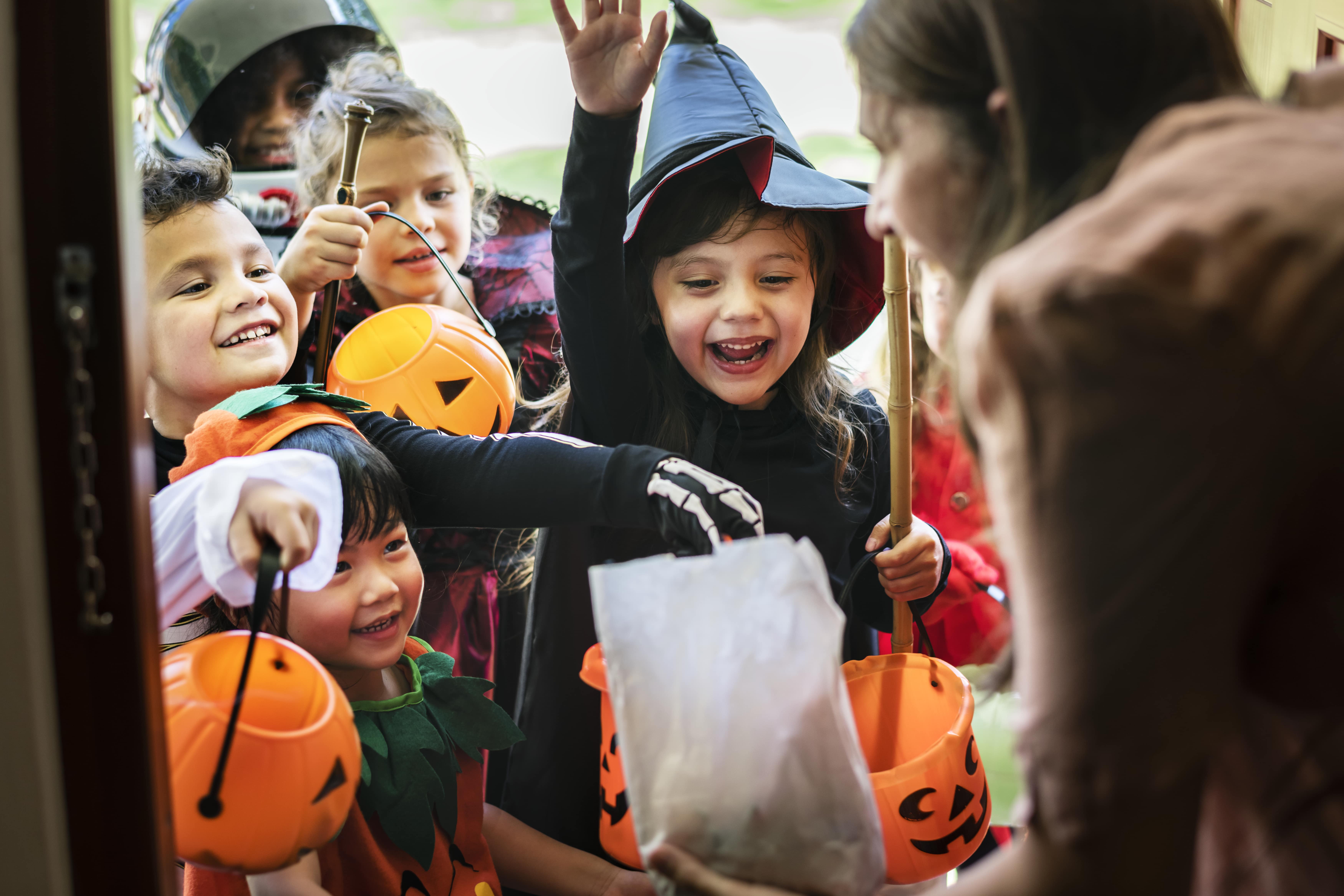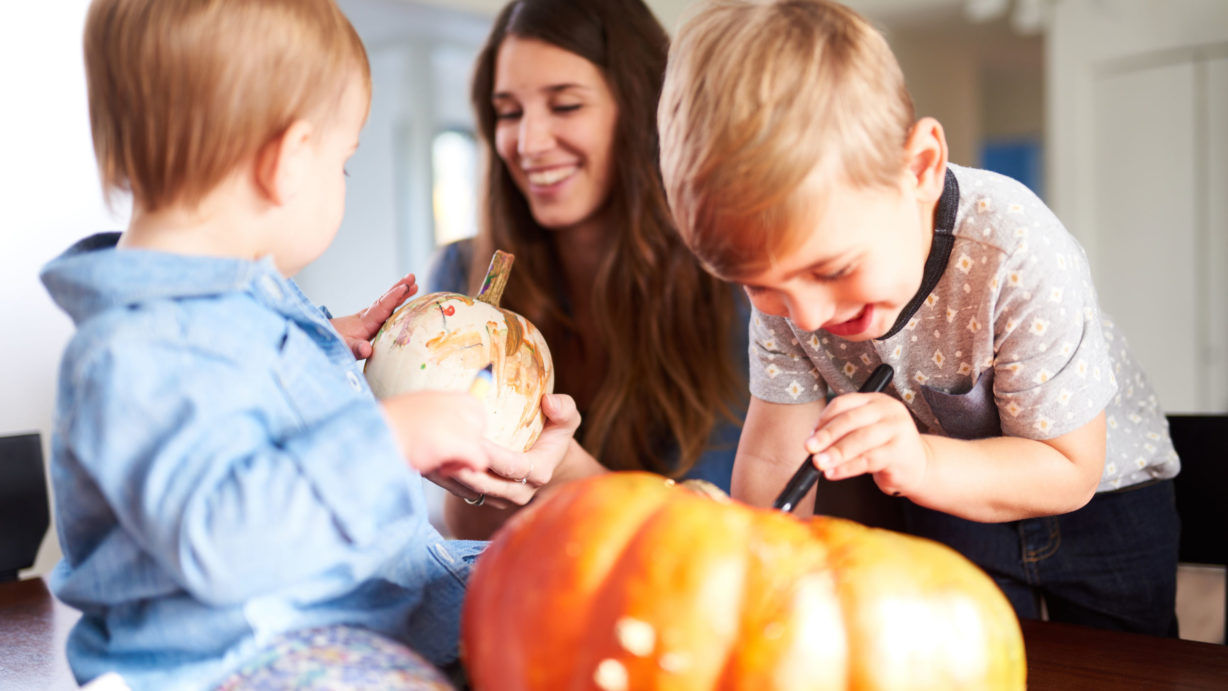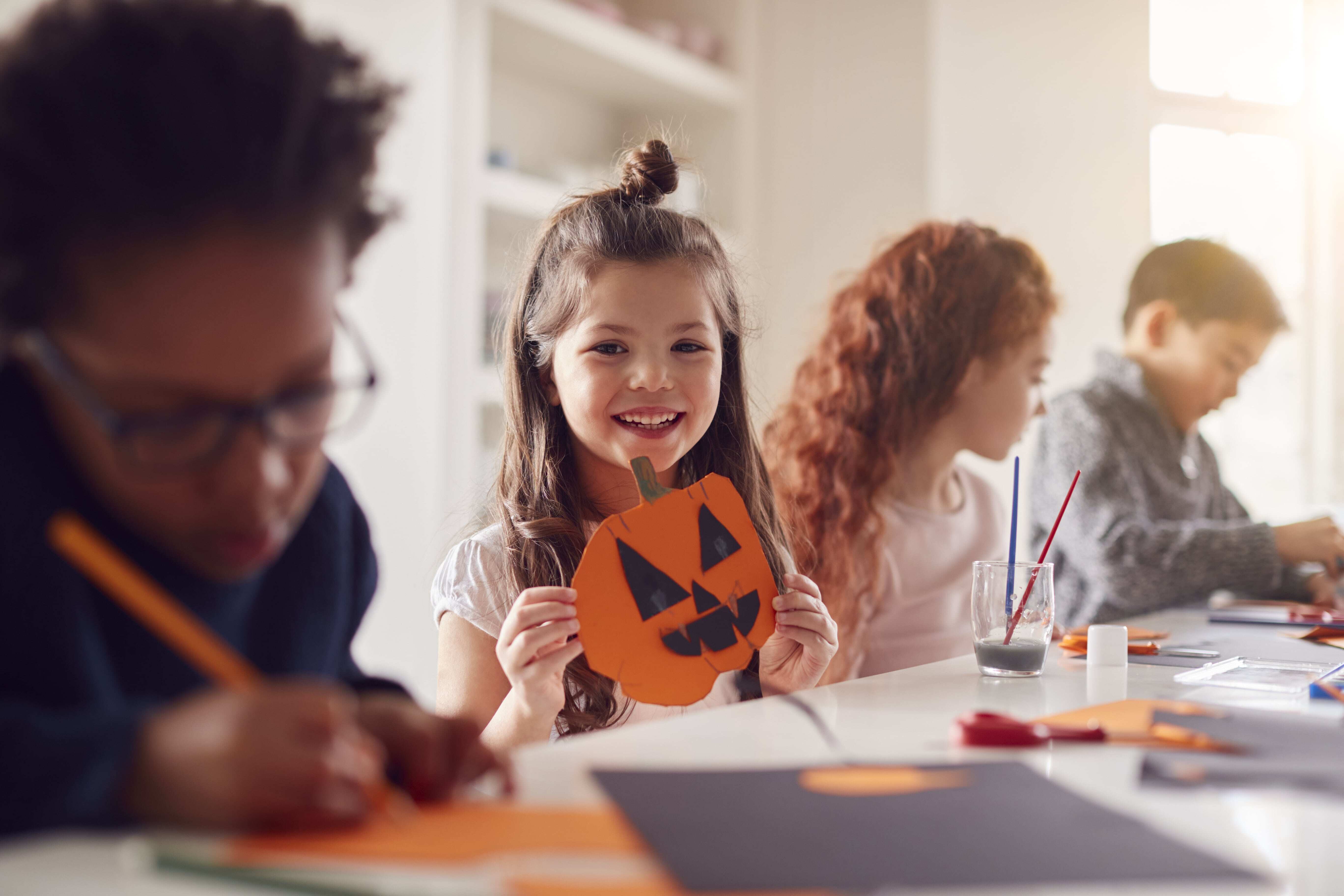With Halloween just around the corner, everyone is excited to get into their costumes and go out trick-or-treating but, of course, there are a few other things to consider such as the preparation that goes into the event as well as alternatives for treats for those children affected by food allergies.
So, consider this your Halloween survival guide!
Event Prep
When carving pumpkins with small children, consider letting them add the artwork with a marker and having the adult do the carving to prevent accidents.
Place candle-lit pumpkins on sturdy surfaces away from flammable items such as curtains. If placing pumpkins on stairs, ensure they are away from visitors to avoid them tipping or getting brushed by long costumes. Alternatively, light your pumpkins with glow sticks or battery-powered tealights.
Consider purchasing non-food treats for those with food allergies (or for all children if you choose to go food-less). The Teal Pumpkin Project has some great suggestions on how to accommodate those with food allergies.
Costume Considerations
To avoid trips and falls, ensure that all costumes are short enough and shoes fit properly.
Because masks can limit or block vision, consider non-toxic makeup and decorative hats as safer alternatives. Hats should fit properly so they don’t slide over eyes. Makeup should be tested ahead of time on a small patch of skin to make sure there are no unpleasant surprises on the big day.
Costume accessories such as swords, canes or sticks shouldn’t be sharp or long. They should be soft and flexible to avoid your child getting hurt if they stumble or trip while carrying it.
The Big Day
To ensure the safety of everyone on the Halloween trail, younger children should always walk with an adult. Older children going out on their own should join together in a group to provide safety in numbers.
If your children are older and venturing out on their own, consider discussing a route for them to follow so you can retrace their steps if the need should arise. Agree on a time for them to return home as well.
For greater visibility, use flashlights or glow stick to light your way or use reflective tape on costumes or treat bags to make it easier to be seen at night.
As you are trick-or-treating throughout your neighbourhood, ensure your kids are walking, not running, from house to house. Travel on well-lit streets and use the sidewalk. If no sidewalk is available, walk on the far edge of the road facing oncoming traffic. Pay attention when walking past driveways to make sure no one is pulling in or out. Cross streets at crosswalks and make eye contact with drivers before you cross to ensure they have seen you.
Finally, make sure your kids know to only trick-or-treat at homes that have their porch lights lit. Coach them to never go to an unlit house or enter a home or car for a treat.
The Loot
To keep kids from filling up on Halloween treats, provide them with a nutritious and filling dinner before heading out.
Teach your kids to not eat any candy until an adult checks it. This is particularly important for those with allergies but a safety precaution in general. Though tampering is rare, a responsible adult should closely examine all treats and throw away any spoiled, unwrapped or suspicious items.
Eat only factory wrapped candy and stay away from homemade treats or candy from another country. Teach your child to politely turn down home-baked items such as cupcakes and brownies.
For those parents with a child suffering from food allergies, always read the labels on treats. Many popular Halloween candies contain some of the most common allergens, such as peanuts or tree nuts, milk, egg, soy or wheat. Also, be aware that “fun size” or miniature candies may have different ingredients or are made on different equipment than the regular size candies, meaning that brands your child previously ate without problems could cause a reaction.
With all of the tips and tricks listed above, your Halloween should be healthy and safe! However, the most important tip of all is to remember to enjoy yourselves and get into the fun and wacky spirit of Halloween!
References:
Halloween Safety Tips from the American Academy of Pediatrics, https://www.aap.org/en-us/about-the-aap/aap-press-room/news-features-and-safety-tips/Pages/Halloween-Safety-Tips.aspx
The Teal Pumpkin Project, https://foodallergycanada.ca/teal-pumpkin-project/







